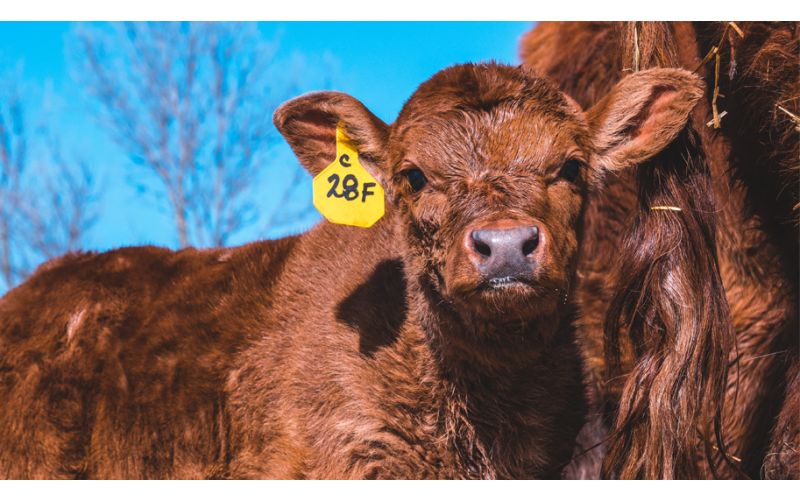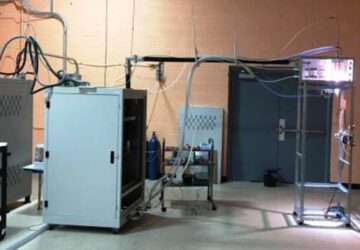Cattle ear tags are small, long-lasting IDs that are put on the ears of cattle to make them easier to handle, track, and keep healthy as a whole. These tags are very important in the livestock business because they make it possible to identify each animal in a herd by its unique number. This piece will explain how cattle ear tags work, the available different kinds, and the benefits of using them. This will help you understand how important they are in modern animal management.
Purpose of Cattle Ear Tags
The primary purpose of cattle ear tags is to provide a unique identification method for each animal in a herd. This identification system serves several essential functions, including:
- Traceability
Cattle ear tags enable quick and efficient traceability of individual animals, helping farmers and ranchers monitor the movement and health history of each member of the herd. This is especially crucial in the context of disease control and prevention.
- Management
Ear tags assist in managing various aspects of a cattle operation, such as breeding programs, veterinary care, and nutritional needs. Farmers can easily keep track of an animal’s age, reproductive history, and medical treatments by referencing the information stored on the ear tag.
- Ownership and Records
The unique identification provided by ear tags helps establish ownership of cattle. Additionally, the tags contribute to the maintenance of comprehensive records, aiding in breeding documentation, genetic tracking, and performance evaluation.
How Cattle Ear Tags Work
The functionality of cattle ear tags depends on their type, but in general, the process involves tagging the animal and recording relevant information. Let’s explore the workings of both visual and RFID ear tags:
- Working of Visual Ear Tags
Visual ear tags are manually attached to the ears of cattle. The tag typically includes a unique identification number, which can be alphanumeric or numeric. The number is usually large and easily readable, facilitating visual identification from a distance. Farmers record this number in their records along with other pertinent information about the animal.
- Working of RFID Ear Tags
RFID ear tags use radio-frequency identification technology to automate the identification process. These tags consist of a microchip and an antenna. When an RFID reader sends out a signal, the tag’s antenna receives it, powering the microchip. The microchip then transmits the unique identification number back to the reader. This process occurs quickly and efficiently, allowing for the simultaneous identification of multiple animals.
Benefits of Cattle Ear Tags
The adoption of cattle ear tags brings numerous benefits to livestock operations. Some key advantages include:
- Efficient Record Keeping
Cattle ear tags simplify record-keeping processes by providing a standardized and easily accessible means of identifying and tracking individual animals.
- Disease Management
In the event of a disease outbreak, quick and accurate identification of affected animals is crucial. Ear tags facilitate the rapid isolation and treatment of infected cattle, minimizing the spread of diseases within a herd.
- Genetic Improvement
For breeding programs, ear tags play a vital role in tracking the lineage and genetic traits of each animal. This information is valuable for making informed breeding decisions and enhancing the overall genetic quality of the herd.
The Components of Cattle Ear Tags
Understanding the components of cattle ear tags is essential for appreciating their durability and functionality. The key components include:
- Material
Ear tags are commonly made of materials such as plastic, metal, or a combination of both. The choice of material depends on factors like durability, visibility, and resistance to environmental conditions.
- Attachment Mechanism
The attachment mechanism varies between ear tags. Common methods include self-piercing studs, which are pushed through the ear, or two-piece tags that require a separate applicator to attach the tag.
- Identification Information
The most critical aspect of the ear tag is the information it carries. This can include a unique identification number, the owner’s brand, or other relevant details. RFID tags also store additional information on the microchip.
Future Trends in Cattle Ear Tag Technology
Advancements in technology continue to shape the landscape of cattle ear tags. Some emerging trends include:
- Smart Ear Tags
Integrating sensors into ear tags allows for the collection of additional data, such as temperature, activity levels, and even GPS location. Smart ear tags provide more comprehensive insights into the health and behavior of individual animals.
- Blockchain Integration
Blockchain technology is being explored to enhance the traceability and transparency of livestock supply chains. Integrating blockchain with cattle ear tags can create a secure and immutable record of an animal’s journey from farm to consumer.
- Artificial Intelligence (AI)
AI applications are being developed to analyze data collected from ear tags. This includes predicting disease outbreaks, optimizing breeding programs, and providing real-time insights for better decision-making.
Conclusion:
Ear tags on cattle have become an important part of modern livestock management because they make it easy to find and identify each animal in a group. Whether they are visible or RFID, these tags make it easier to keep records, control diseases, and improve genetics. The addition of smart features, blockchain, and AI to cow ear tags could make them even more useful as technology keeps getting better. At the end of the day, using these tools makes the livestock business more sustainable, open, and efficient.








